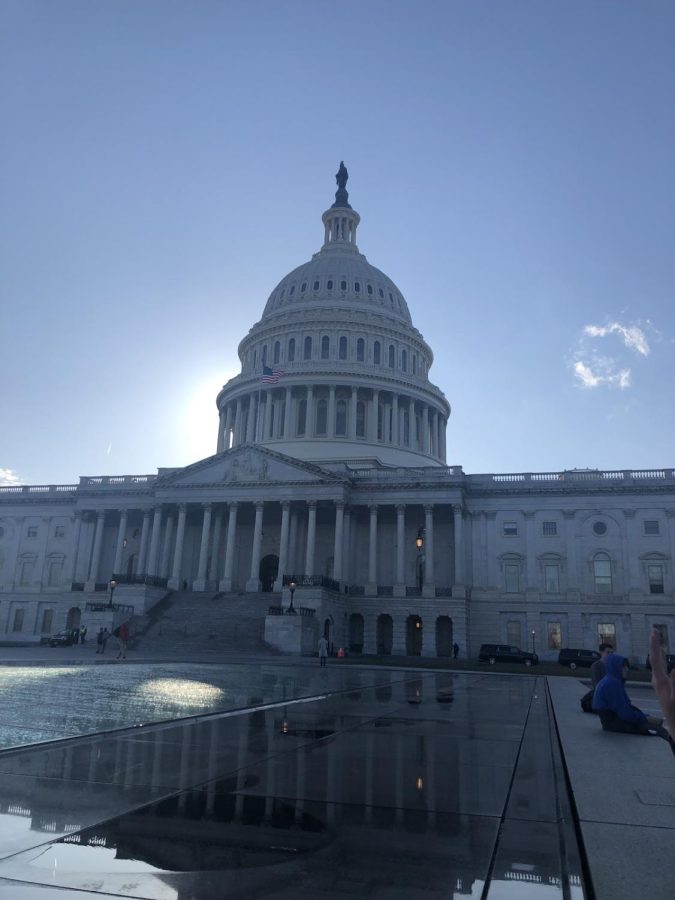What Is the Debt Ceiling and Why Does It Matter?
U.S. Capitol Building
What is the debt ceiling?
The debt ceiling or debt limit is the limit on the amount of debt the government is allowed to go into in order to pay back everything it already owes. It is important to note that this doesn’t give the government more money to spend on new commitments, rather, money to continue paying for other commitments. Some of the things that government debt pays for are: Social Security, Medicare, military salaries, federal employees, and tax refunds. As of January 2023, the debt ceiling and total national debt are both $31.4 trillion. The U.S. has reached its limit on spending, which means that it’s time for Congress to raise the debt ceiling again. This is normally a routine process, but it’s seeming like this year it may not be so easy.
Why do we even have a debt ceiling?
The debt ceiling was created in 1917 as part of an act that allowed the government to use bonds to pay for WWI. This act was met by resistance from the large faction of Congressmen who didn’t want the United States to enter WWI. By putting a limit on the amount of money the government was allowed to spend, that faction was convinced to pass the act. However, the initial amount of money granted through the debt limit has proved to be insufficient every time it’s raised. Since 1960, the government debt limit has been raised 78 times.
Why does it matter so much now?
Congress is currently battling over raising the debt ceiling—a battle that usually ends quickly, because nobody wants to risk the possibility of a default (where the U.S. stops making payments on its debt). Treasury Secretary Janet Yellen has said that the U.S. will be able to continue paying its bills until June, but if the debt ceiling is not raised, then all of the systems and responsibilities that the government pays for will stop being covered.
What happens if there’s a default?
Anyone who receives any sort of financial aid from the government is not going to be able to access that aid anymore, and anyone who is an employee of the federal government would no longer be paid. This would also be devastating to many global markets, because U.S. bonds are considered one of the most trustworthy investments due to the fact that the U.S. has never defaulted on its debt. The cutoff of funding to government institutions could also result in a disastrous shutdown of the government, with agencies like the IRS being temporarily unable to operate. Even if this seems irrelevant to your life, the long-term consequences would be drastic. According to the think tank Third Way, the U.S. could lose up to 3 million jobs, everyday items would be much more expensive, it would be much harder to obtain any kind of loan (including student loans), and the average new mortgage on a home would cost $130,000 more.
Why would anyone want to default on the debt?
Congress doesn’t exactly want to default on the debt, but they see it as a tool to help further their own political agendas. House Republicans are refusing to pass another raise on the debt ceiling before Congress agrees to major cutbacks on spending. What exactly these cutbacks will be has yet to be announced to the public. As the timer for default keeps steadily ticking, all we can do is be informed, prepared, and ultimately supportive of raising the debt ceiling…once again.
Your donation will support the student journalists of Centaurus High School. Your contribution will allow us to purchase equipment and cover our annual website hosting costs.

Rowan Ogilvie (he/him) is the Co-Editor-in-Chief for The Warrior Scroll. He is a senior at Centaurus High School and this is his fourth year on staff....















Anonymous • Feb 3, 2023 at 10:23 pm
Yeah. The debt ceiling is kinda just a warning. It kinda sucks that we have so much debt. But I guess being the world reserve currency kinda allows that.